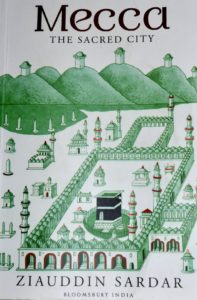 I always find it hard to explain bombing of mosques by Shias and Sunnis in Pakistan killing believers in the house of God, massacre of thousands of Muslims in Sirya, Iraq and Egypt and cold blooded murder of women and children by Isis in the name of Islamic caliphate. I try to find solace that though there may be some truth in these reports, they are primarily the machinations of enemies of Islam to divide the Muslim world and prove that ‘one text and one prophet’ cannot bind Muslims together.
I always find it hard to explain bombing of mosques by Shias and Sunnis in Pakistan killing believers in the house of God, massacre of thousands of Muslims in Sirya, Iraq and Egypt and cold blooded murder of women and children by Isis in the name of Islamic caliphate. I try to find solace that though there may be some truth in these reports, they are primarily the machinations of enemies of Islam to divide the Muslim world and prove that ‘one text and one prophet’ cannot bind Muslims together.
But after reading the horrendous history of sectarianism erupted among Muslims just a few years after the death of beloved prophet and virtual blood bath unleashed by Muslim groups in Mecca, the most sacred place on earth for every Muslim, forced me to rethink about the history of my own faith.
I didn’t expect this much horror when Ziauddin Sardar warned in his introduction to his latest work, Mecca: The sacred city, that “what I have learnt has often shocked me, just as it will shock any reader”. When I read the atrocities committed in Kaaba by Qarmatians, probably the rightful predecessors of present day Isis militants, I realized that the author was right.
The events unfolding in the succeeding chapters prove that ‘the history of Mecca is as dreadful and bloody as the histories of many other cities’.
The fight of ‘believers against believers’ has a long drawn history dating back to the fourth caliph and one of the closest companions of the prophet, Ali Ibn Abu Talib. The Battle of Camel in 656 AD was fought between Ali and Aisha (the youngest wife of the prophet) and about 15,000 people were killed. They were all Muslims! Again, Battle of Siffin in 657 and Battle of Karbala in 680 were also between warring Muslims groups.
But the real shock comes when Qarmatians, a ninth century puritanical Muslim group, unleashed terror in the sacred city looting and massacring Hajj pilgrims and desecrating Kaaba, the first house built for God. “In 906 they ambushed the Hajj caravan from Baghdad and massacred an estimated 20,000 pilgrims,” Sardar writes.
Quoting the 19th century Ottoman historian, Qutub Din, Sardar describes the second wave of attack by Qarmatians in 930 AD leaving the reader shell shocked. “They entered armed and on horseback into the Haram, putting those circumambulating (tawaf) to the sword-all those praying and in the state of ihram being weaponless in their sanctified condition- and in the end they killed altogether about 30,000 people in the Haram…Abu Tahir (leader of the group) halted before the Kaaba, where his horse dropped dung and urinated. The well of Zamzam and all the other wells and pits of Mecca were filled to overflowing with the remains of martyrs…..”
Next was the turn of Muhammad ibn Abd al Wahab and the house of Saud, beginning of a new chapter in the history of the holy city. Fighting for the control of Mecca, Wahhabis also began to harass pilgrim caravans and levied heavy taxes on pilgrims who passed through their territory and finally took over the city in 1924.
The discovery of oil and new administration under Saud heralded a new era of development in Mecca and it continues to this day which according to Sardar changed Mecca into an inhuman jungle where grotesque steel and glass buildings jostle for attention. Under Saudis the city became zealously puritanical and its religious diversity virtually disappeared.
Known for his strong views on Wahhabi brand of Islam, Sardar’s severe criticism against the present Saudi administration and its policies are understandable. However, Sardar asks a few uncomfortable questions which force every right thinking person to ponder about. The holy city is forbidden for non-Muslims, a legacy of Umayyad dynasty contrary to the tradition of the Prophet, but still remains unquestioned. He also asks what should Muslims do when faced with the complete eradication of respect for the traces of their history at the very place where their identity begins?
This grotesque metropolis is built on the graves of houses and cultural sites of immense beauty and long history. An estimated 95% of the city’s millennium old buildings, consisting of over 400 sites of cultural and historical significance, were demolished to build this ‘Las Vegas of Arabia’. Mecca is a place riddle with racism, bigotry and xenophobia betraying the lofty ideal of one brotherhood beyond differences of race, colour, language and ethnicity which Islam stands for. The Wahhabi clerics justify the demolition of historical sites and shrines because they promote shirk (idolatry).
But Sardar says, “Yet Mecca is knee-deep in shirk. It is manifest not just in the worship of money, wealth and consumerism”. It can be discovered in the Sacred Mosque itself. Mecca in our times is an extreme encapsulation of the condition of Muslims everywhere, the challenges they face and the failing they are heir to. When Mecca, the heart of Islam, is defiled, polluted, culturally arid and surrounded by corruption, the rest of the Islamic world hardly fares better, he concludes.
Tags: Islam, Karbala, Mecca, Qarmatians, Wahhabism, Ziauddin Sardar